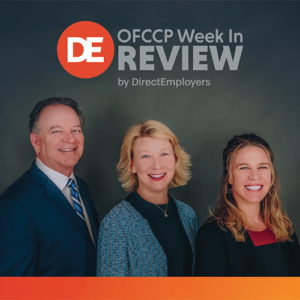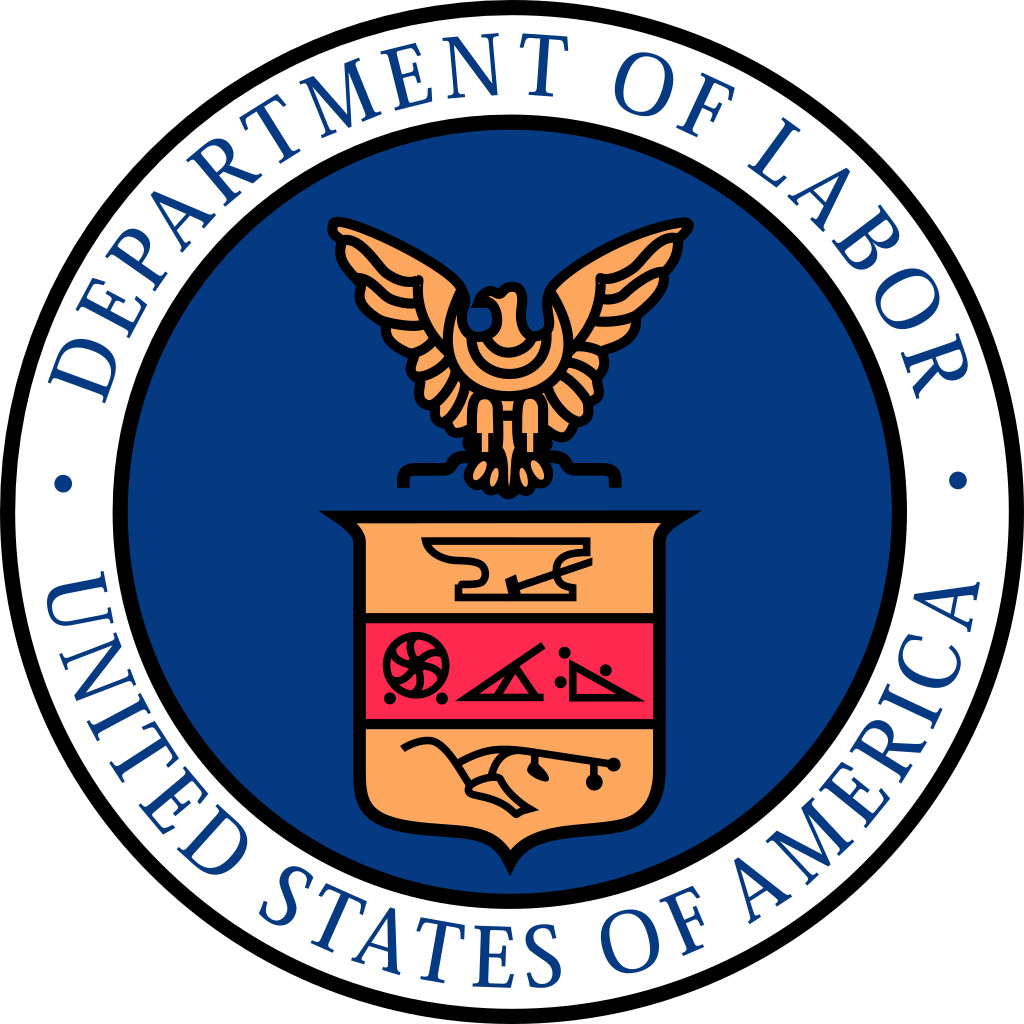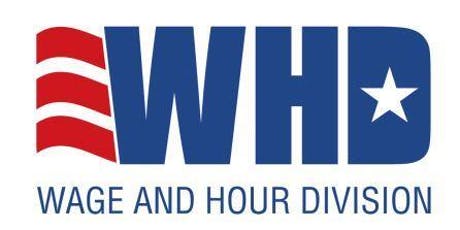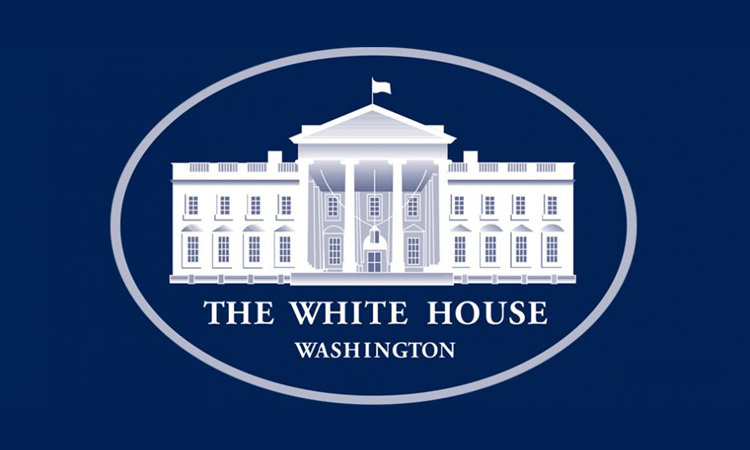
- It Starts: Again. Texas Sued the EEOC Over Its Workplace Transgender Bathroom Guidance
- Joint-Employer Recission Rule Pushed Back Due To Technicality
- Advisory Committee On Apprenticeships Is Now Staffed and Is Hosting a Public Meeting
- Nine Organizations Identified in the Employment Navigator and Partnership Pilot to Assist Transitioning Service Members & Spouses
- USDOL Delayed Returning Its Employees To Work In The Office: Teleworking To Remain Until The Start of Calendar 2022
- A New Tip Rule Provides More Employee-Friendly Provisions
- The Deadline for the White House Gender Policy Council Strategy Report to The President Has Passed Without Announcement
- By Executive Fiat, White House Task Force Suddenly Extended a COVID-19 Vaccine Mandate to Include ALL Employees of Federal Contractors and Subcontractors
Monday, September 20, 2021: It Starts: Again. Texas Sued the EEOC Over Its Workplace Transgender Bathroom Guidance

Texas’ suit focuses solely on the EEOC guidance, and is brought in Texas’ capacity as an employer subject to Title VII law. In the suit, Texas contends that the EEOC guidance misstates applicable Title VII law since the Supreme Court’s ruling in Bostock v. Clayton County that expanded Title VII protection to sexual orientation and gender identity was limited to protecting against discrimination in employment decisions. Texas notes in its Complaint that the court in Bostock specifically declined to address questions about the use of sex-segregated bathrooms, locker rooms, and showers based on gender identity. As such, Texas alleges the EEOC’s guidance substantively and procedurally violates Title VII, exceeds the scope of the EEOC’s authority by failing to follow regulatory requirements, and violates the Administrative Procedure Act and the First and Eleventh Amendments of the U.S. Constitution. Texas seeks a court order declaring the guidance unlawful, a preliminary and permanent injunction blocking enforcement of the EEOC guidance, as well as attorneys’ fees and costs related to bringing the suit.
As noted above, Texas’ suit is the second case brought by a state seeking to restrict the federal government’s attempt to expand sexual orientation and gender identity protections. The suit is yet another example of the federalism approach to litigation that states have adopted to attack federal policies or programs with which they disagree. This strategy expanded during the Trump Administration when “blue” states sought to prevent application of Trump Era rules with which they disagreed. “Tit for tat,” or “what goes around, comes around” “red” states are now similarly using their taxpayer dollars to attack Biden Administration social policies to which the states object. Unfortunately for employers, it will likely take several different cases over several years to present all the associated questions and for employers to obtain a final resolution of them, following appeals. Check with an employment lawyer for his/her advice about how to proceed in the meantime.
Tuesday, September 21, 2021: Joint-Employer Rescission Rule Pushed Back Due To Technicality

What Happened?
The effective date was September 28, 2021, 60 days after publication. However, the Senate did not receive the submission until August 6, 2021. The Office of Information and Regulatory Affairs (OIRA) designated the Joint Employer Rescission Final Rule as a “major” rule, as defined by 5 U.S.C. 804(2), thus requiring 60 days from the date the Senate receives it to go into effect. To conform to the effective date requirement of the Congressional Review Act, WHD must extend the effective date of the Joint Employer Rescission Final Rule to October 5, 2021, 60 days after the Senate received the submission.
How We Got Here
- July 30, 2021: DOL Publishes Final Rule Rescinding Trump Administration Joint-Employer Rule Under the FLSA. The Biden Administration rescinded the Trump Administrations Rule (published July 30, 2021, and was to be effective September 28, 2021 – now extended to October 5, 2021), returning the policy to the Obama Administrations’ version.
- January 12, 2020: USDOL Announced its Controversial “Joint Employer” Final Rule. The new Final Rule under the Trump Administration (published on January 16, 2020, and took effect on March 16, 2020) returned the WHD’s policy back to what it was before the Obama Administration.
Tuesday, September 21, 2021: Advisory Committee On Apprenticeships Is Now Staffed and Is Hosting a Public Meeting

Meeting Details
October 6, 2021
3:30 – 5:00 PM EST
Virtual Meeting – register online
In Related News
The U.S. Department of Labor announced the appointments of 29 members to serve on the ACA and provide advice and recommendations on issues related to Registered Apprenticeship. The advisory committee will also promote greater awareness of the benefits of apprenticeship, foster increased alignment between apprenticeship opportunities and workforce and education systems, expand apprenticeships into new industries and occupations, and ensure equity for under-represented populations.
Members of the committee serve two-year terms, representing employers, labor-management organizations, community colleges, and other institutions. Representatives from the U.S. Departments of Commerce, Education, Energy, Transportation, Housing and Urban Development, and Health and Human Services serve as ex officio members.
Also released this week, a blog by the USDOL titled “Inclusive Apprenticeships: Increasing Access to Clean Energy Careers for People with Disabilities.” According to the 2021 U.S. Energy and Employment Report, a growing number of job opportunities abound in the clean energy sector. This sector includes jobs in industries ranging from electric vehicles to solar power installation. Although there were more than 3 million clean energy-related jobs in 2020, many employers in the clean energy sector reported significant challenges in finding skilled candidates to fill positions. (Podcast also available)
In The Know
The Advisory Committee on Apprenticeship (ACA) is a discretionary committee the Secretary of Labor established on May 4, 2021. In February 2021, we reported, “Biden Administration Pulls Back on Industry Designed Apprenticeship Programs to Drive Apprenticeships Back to Union-Supported Registered Apprenticeship Programs.” In his announcement, President Biden rescinded the authority of the ETA to certify and reimburse costs for Industry-Recognized Apprenticeship Programs (IRAPs) and ordered the ETA to relaunch the ACA.
Wednesday, September 22, 2021: USDOL Delayed Returning Its Employees To Work In The Office: Teleworking To Remain Until The Start of Calendar 2022

In June, we reported the details of a 20-page Office of Management and Budget (OMB) memo it sent to all agencies in the Executive Branch of the federal government tasking them to complete and return written re-entry plans to OMB for review by June 18, 2021. As of last June, OMB’s plan was that the federal Executive Branch agencies were to begin the re-entry process to their “brick and mortar” offices by July 19, 2021 (which quietly did not happen).
The USDOL has a 26-page COVID-19 Workplace Safety Plan, dated August 2021. The plan makes several references to the “re-entry plan,” although the re-entry plan is mysteriously not publicly accessible at this time. NOTE: The WIR team has made several attempts to obtain this information from OMB and has yet to receive USDOL’s re-entry plan.
In Related News
The deadline for federal Executive Branch employees to be fully vaccinated is November 22, 2021.
Friday, September 24, 2021: A New Tip Rule Provides More Employee-Friendly Provisions

What Was Scratched?
- The civil money penalty (CMP) provisions that would have allowed the WHD to assess these penalties only when the WHD found the employer’s violations to be repeated or willful (withdrawing regulatory language in 29 CFR 578.3, 578.4, 579.1, 580.2, 580.3, and 580.12 that had limited assessment of CMPs for section 3(m)(2)(B) violations to only repeated or willful violations).
Note: The Consolidated Appropriations Act of 2018 allows the WHD to impose civil money penalties up to $1,100 when employers keep employees’ tips – in violation of the law – regardless of whether violations are repeated or willful.
What Was Modified?
- Managers and supervisors may not receive tips from mandatory tip pools or tip-sharing arrangements. However, they are not prohibited from contributing tips to eligible employees in mandatory tip pools or tip-sharing arrangements. (modification to 29 CFR §531.54(c)(3) and (d)
- A manager or supervisor may keep tips only when the tip is based on a service the manager or supervisor directly and “solely” provides. An employer may require the manager or supervisor to share some of the tips with other eligible employees. (modification to 29 CFR §531.52)
What’s Still Pending?
The verdict is still out on the dual jobs portion (the so-called “80/20” rule) of the Tip Rule. On April 29, 2021, the WHD published a Final Rule announcing that it would undertake a separate rulemaking on dual jobs. Per the NPRM dated June 23, 2021 (see our detailed breakdown on June 21, 2021), the WHD proposed withdrawing the dual jobs portion and re-proposing new regulatory language. Specifically, the WHD proposed that an employee is only engaged in a tipped occupation under 29 U.S.C. 203(t) when the employee either:
- performs work that produces tips or
- performs work that directly supports the tip-producing work, provided that the directly supporting work is not performed for a substantial amount of time.
The Agency received 1,865 comments before the closing date of August 23, 2021.
How We Got Here
The Trump Administration published a Final Rule (“2020 Tip Rule”) on December 30, 2020 (with an effective date of March 1, 2021). Days before the effective date, on February 26, 2021, the Biden Administration issued a “new” Final Rule extending the effective date to April 30, 2021. The WHD wanted the “opportunity to review issues of law, policy, and fact raised by the 2020 Tip Final Rule before it took effect.” Then on March 25, 2021, the WHD issued two Notices of Proposed Rulemakings (NPRMs). The first further extended the effective date to December 31, 2021. The second sought to withdraw and re-propose:
- the portion incorporating the 2018 Consolidated Appropriations Act (CAA) new provisions authorizing the assessment of civil money penalties (CMPs) for violations of section 3(m)(2)(B) of the Act; and
- the portion of its CMP regulations addressing willful violations.
Friday, September 24, 2021: The Deadline for the White House Gender Policy Council Strategy Report to The President Has Passed Without Announcement

The Event
- Monday, March 8, 2021: Biden Creates a White House Gender Policy Council
The Task / The Deadline
- Executive Order 14020 charged the Council to submit to President Biden by September 24, 2021 (last Friday), a “Government-wide strategy for advancing gender equity and equality in the United States and, when applicable, around the world.” EO 14020 also suggests the “Strategy” “should include recommendations on policies, programs, and initiatives that should be proposed, passed, or implemented to advance gender equity and equality in the United States and around the world.”
The Status
Nothing was made public at the time of this publication. The WIR team has requested a copy of the strategy.
Friday, September 24, 2021: By Executive Fiat, White House Task Force Suddenly Extended a COVID-19 Vaccine Mandate to Include ALL Employees of Federal Contractors and Subcontractors

- COVID-19 vaccination of covered contractor employees, except in limited circumstances where an employee is legally entitled to an accommodation;
More Details: “Covered contractor employees must be fully vaccinated no later than December 8, 2021. After that date, all covered contractor employees must be fully vaccinated by the first day of the period of performance on a newly awarded covered contract, and by the first day of the period of performance on an exercised option or extended or renewed contract when the clause has been incorporated into the covered contract.” (pg 5)
Defined: “Covered contractor employee – means any full-time or part-time employee of a covered contractor working on or in connection with a covered contract or working at a covered contractor workplace. This includes employees of covered contractors who are not themselves working on or in connection with a covered contract.” (pg 3 & 4 emphasis added)
Editor’s Note: It is not possible to reconcile the language of the above highlighted Guidance with the much narrower language of President Biden’s Executive Order 14042 which set out the vaccination mandate to start this parade. Here is President Biden’s language from the first sentence of his EO 14042 framing its reach in Section 1 “Policy”:
“This order promotes economy and efficiency in Federal procurement by ensuring that the parties that contract with the Federal Government provide adequate COVID-19 safeguards to their workers performing on or in connection with a Federal Government contract or contract-like instrument as described in section 5(a) of this order.” (emphasis added)
Please note the bald-faced stretch now contained in the Guidance from the EO’s language binding “workers performing on or in connection with” to the broader Guidance language now seeking to bind:
“any *** employee of a covered contractor working on or in connection with a covered contract or working at a covered contractor workplace. This includes employees of covered contractors who are not themselves working on or in connection with a covered contract.” (emphasis added)
Editor’s Note: We pointed out in an earlier Blog that the President’s Executive Order 14042 was unenforceable, even in its narrower state, without the Safer Federal Workforce Task Force publishing Rules for Public Comment consistent with the Administrative Procedure Act. See, our WIR from Thursday, September 9, 2021: Two of President Biden’s Four Vaccine Mandates are Likely Unlawful, Without Implementing Rules, While the Other Two are Likely Lawful. The Task Force’s new attempt to further expand President Biden’s Executive Order is another fatal blow to the enforceability of the Task Force’s “Guidance,” which the law will treat as merely advisory: in the way of “Helpful Hints from Heloise.”
What the Task Force should have done, had it wanted to enforce the mandates of its new Guidance, was to first: (a) ask the President to amend and broaden his Executive Order 14042, and then (b) to issue for notice and comment a Notice of Proposed Rulemaking setting out the substance of the Guidance it wishes the contracting officers within the Executive Branch of the federal government to enforce. And, it might have been prudent and wise for the Task Force to also delay its Rulemaking so it could coordinate its substance with that of the coming OSHA Rule…just for the sake of consistency, good science and coordinated administration of similar mandates on federal contractors, most of which are also employers which OSHA covers and will have to comply with both mandates if they become law.
The mistake the Safer Federal Workforce Task Force has made is to confuse its legal authority over federal employees with its authority over federal Government contractors and subcontractors. While the President is the Chief Administrative Officer of the federal government workforce, he is not the “boss” of federal contractors and subcontractors. Accordingly, the President requirements may not just “lean out the window” and shout new orders, but rather must follow the Rule of Law to enforce his policy upon federal contractors/subcontractors.
The next issue for contractors, of course, is going to be what they do to either comply with the Task Force’s Guidance, or choose to simply ignore it as unenforceable.
- Compliance by individuals, including covered contractor employees and visitors, with the Guidance related to masking and physical distancing while in covered contractor workplaces;
More Details: “Covered contractors must ensure that all individuals, including covered contractor employees and visitors, comply with published CDC guidance for masking and physical distancing at a covered contractor workplace. Covered contractors must check the CDC COVID-19 Data Tracker County View website for community transmission information in all areas where they have a covered contractor workplace at least weekly to determine proper workplace safety protocols (emphasis added).” (pg. 6)
- Designation by covered contractors of a person or persons to coordinate COVID-19 workplace safety efforts at covered contractor workplaces.
Guidance or Mandate?
According to the Guidance,
“Covered contractors shall adhere to the requirements of this Guidance. The Director of OMB has, as authorized by Executive Order 14042, approved this Guidance and has, an exercise of the delegation of authority (see 3 U.S.C. § 301) under the Federal Property and Administrative Services Act determined that this Guidance will promote economy and efficiency in Federal contracting if adhered to by Government contractors and subcontractors. The Director has published such determination in the Federal Register (emphasis added).” (pg 2)
Frequently Asked Questions
There are 21 questions in the FAQ section (pages 9-14). Of particular interest is question 11 about remote employees.
Q11: How does this Guidance apply to covered contractor employees who are authorized under the covered contract to perform work remotely from their residence?
A: An individual working on a covered contract from their residence is a covered contractor employee, and must comply with the vaccination requirement for covered contractor employees, even if the employee never works at either a covered contractor workplace or Federal workplace during the performance of the contract (emphasis added).
What Does This Guidance Supersede?
- Any state or local law or ordinance (Q19)
- The Occupational Safety & Health Administration’s (OSHA’s) Guidance (Q20)
- Any previous versions of the Guidance (should it be revised) (Q16)
How We Got Here:
On Thursday, September 9, 2021, we reported that “President Biden Mandates COVID-19 Vaccine for Certain Federal Contractors: Exceptions As Interesting As Who is Covered.” The mandate requires Federal Contractors and Subcontractors to follow Guidance by the Safer Federal Workforce Task Force.
The Executive Order
Executive Order 14042 requires, through a clause the President hopes to cause the U.S. Government Services Administration (GSA) to insert into federal contracts after September 24, 2021, that:
“the contractor or subcontractor shall, for the duration of the contract, comply with all guidance for contractor or subcontractor workplace locations published by the Safer Federal Workforce Task Force (Task Force Guidance or Guidance).”
THIS COLUMN IS MEANT TO ASSIST IN A GENERAL UNDERSTANDING OF THE CURRENT LAW AND PRACTICE RELATING TO OFCCP. IT IS NOT TO BE REGARDED AS LEGAL ADVICE. COMPANIES OR INDIVIDUALS WITH PARTICULAR QUESTIONS SHOULD SEEK ADVICE OF COUNSEL.
SUBSCRIBE.
Compliance Alerts
Compliance Tips
Week In Review (WIR)
Subscribe to receive alerts, news and updates on all things related to OFCCP compliance as it applies to federal contractors.
OFCCP Compliance Text Alerts
Get OFCCP compliance alerts on your cell phone. Text the word compliance to 55678 and confirm your subscription. Provider message and data rates may apply.

 The U.S. Department of Labor announced its
The U.S. Department of Labor announced its